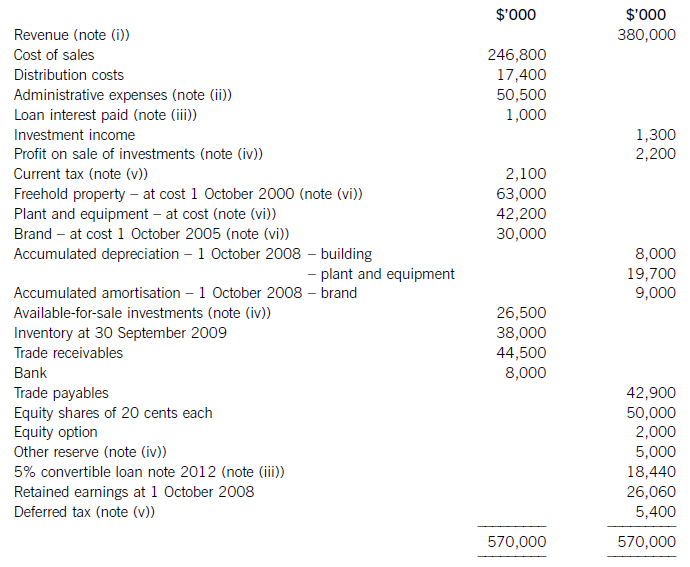究竟该怎么学习ACCA中的税法这一科目呢,本文告诉你!
发布时间:2020-04-24
ACCA 中的税法经常以知识点细碎著称,每当ACCAer们学到F6时都会觉得税法知识不成体系,学起来十分耗时。那么我们究竟该怎么学习ACCA中的税法这一科目呢?你对ACCA中的税法了解吗?一起来跟随51题库考试学习网看看相关内容吧。
科目介绍:
英国税法 (TX) 是ACCA基础阶段中的唯一税务科目。它对于学员成为合格的会计师至关重要,所以该科目的重要性不言而喻。
大纲中首先介绍了英国的税法体系;其次引入了与之相关的6大税种,分别为个人所得税,资本利得税,国民保险税,遗产税,企业所得税,增值税;最后明确了纳税人义务及其代理人。
学员在完成本科目后,需要具有计算个人,公司,集团公司应纳税义务,识别纳税时间的能力。并以计算结果为依托,为客户进行合理税务筹划,达到减税甚至免税的效果。
大纲解读及重难点
通过浏览大纲中对于学生的要求可以发现,TX的考察难度相比以前年份有了明显提高。Calculate, explain, discuss等动词频率明显增加,而describe,
list等动词频率有所降低。这说明仅仅依靠死记硬背想通过这门考试是不可能的,学生需要通过计算,进行分析讨论,并给出结论及避税的合理化建议。
在这几次的考试中,个人所得税,遗产税及其相关的税务筹划问题,一直是学生的难点和痛点,同时也是考官重点考察的对象。
学习建议:
由于今年的特殊情况,下一次的统考时间为2020年7月,而恰好税法将进行考纲及税率更新。所以备考学生首先需要购置最新版本的讲义和练习册。在学习过程中,注意以下几点。
1、无论是平时学习还是考前复习,一定要覆盖所有章节。尤其是重点知识,一定要做到完全的学习和掌握。选择题和填空题目,对于细节的要求越来越高,如果没有非常熟练的掌握,考试的时候根本无法应对。
2、在落实讲义内容的基础上,掌握BPP练习册的习题,并且保证重要的题目做3遍。这样做的目的是,能够在考场的高压状态下,快速对题目考点做出判断,并且完成作答。在平时学习中,还要对税务筹划,纳税日期等知识进行了解,做到文字题有内容可写,计算题有步骤可算。在全球考前2周,至少参加2次模考,提前进入考试状态。
3、提高运用word, excel的能力,能够在考试中合理,快速调取函数,为考试争取宝贵时间。
愉快的时光总是很短暂,以上就是今天51题库考试学习网为大家分享的全部内容,如有其他疑问请继续关注51题库考试学习网!
下面小编为大家准备了 ACCA考试 的相关考题,供大家学习参考。
5 The directors of Quapaw, a limited liability company, are reviewing the company’s draft financial statements for the
year ended 31 December 2004.
The following material matters are under discussion:
(a) During the year the company has begun selling a product with a one-year warranty under which manufacturing
defects are remedied without charge. Some claims have already arisen under the warranty. (2 marks)
Required:
Advise the directors on the correct treatment of these matters, stating the relevant accounting standard which
justifies your answer in each case.
NOTE: The mark allocation is shown against each of the three matters
(a) The correct treatment is to provide for the best estimate of the costs likely to be incurred under the warranty, as required by
IAS37 Provisions, contingent liabilities and contingent assets.
The following trial balance relates to Sandown at 30 September 2009:

The following notes are relevant:
(i) Sandown’s revenue includes $16 million for goods sold to Pending on 1 October 2008. The terms of the sale are that Sandown will incur ongoing service and support costs of $1·2 million per annum for three years after the sale. Sandown normally makes a gross profit of 40% on such servicing and support work. Ignore the time value of money.
(ii) Administrative expenses include an equity dividend of 4·8 cents per share paid during the year.
(iii) The 5% convertible loan note was issued for proceeds of $20 million on 1 October 2007. It has an effective interest rate of 8% due to the value of its conversion option.
(iv) During the year Sandown sold an available-for-sale investment for $11 million. At the date of sale it had a
carrying amount of $8·8 million and had originally cost $7 million. Sandown has recorded the disposal of the
investment. The remaining available-for-sale investments (the $26·5 million in the trial balance) have a fair value of $29 million at 30 September 2009. The other reserve in the trial balance represents the net increase in the value of the available-for-sale investments as at 1 October 2008. Ignore deferred tax on these transactions.
(v) The balance on current tax represents the under/over provision of the tax liability for the year ended 30 September 2008. The directors have estimated the provision for income tax for the year ended 30 September 2009 at $16·2 million. At 30 September 2009 the carrying amounts of Sandown’s net assets were $13 million in excess of their tax base. The income tax rate of Sandown is 30%.
(vi) Non-current assets:
The freehold property has a land element of $13 million. The building element is being depreciated on a
straight-line basis.
Plant and equipment is depreciated at 40% per annum using the reducing balance method.
Sandown’s brand in the trial balance relates to a product line that received bad publicity during the year which led to falling sales revenues. An impairment review was conducted on 1 April 2009 which concluded that, based on estimated future sales, the brand had a value in use of $12 million and a remaining life of only three years.
However, on the same date as the impairment review, Sandown received an offer to purchase the brand for
$15 million. Prior to the impairment review, it was being depreciated using the straight-line method over a
10-year life.
No depreciation/amortisation has yet been charged on any non-current asset for the year ended 30 September
2009. Depreciation, amortisation and impairment charges are all charged to cost of sales.
Required:
(a) Prepare the statement of comprehensive income for Sandown for the year ended 30 September 2009.
(13 marks)
(b) Prepare the statement of financial position of Sandown as at 30 September 2009. (12 marks)
Notes to the financial statements are not required.
A statement of changes in equity is not required.
(i)IAS18Revenuerequiresthatwheresalesrevenueincludesanamountforaftersalesservicingandsupportcoststhenaproportionoftherevenueshouldbedeferred.Theamountdeferredshouldcoverthecostandareasonableprofit(inthiscaseagrossprofitof40%)ontheservices.Astheservicingandsupportisforthreeyearsandthedateofthesalewas1October2008,revenuerelatingtotwoyears’servicingandsupportprovisionmustbedeferred:($1·2millionx2/0·6)=$4million.Thisisshownas$2millioninbothcurrentandnon-currentliabilities.
(c) Discuss the practical problems that may be encountered in the implementation of an activity-based system
of product cost management. (5 marks)
(c) The benefits of an activity-based system as the basis for product cost/profit estimation may not be straightforward. A number
of problems may be identified.
The selection of relevant activities and cost drivers may be complicated where there are many activities and cost drivers in
complex business situations.
There may be difficulty in the collection of data to enable accurate cost driver rates to be calculated. This is also likely to
require an extensive data collection and analysis system.
The problem of ‘cost driver denominator level’ may also prove difficult. This is similar to the problem in a traditional volume
related system. This is linked to the problem of fixed/variable cost analysis. For example the cost per batch may be fixed. Its
impact may be reduced, however, where the batch size can be increased without a proportionate increase in cost.
The achievement of the required level of management skill and commitment to change may also detract from the
implementation of the new system. Management may feel that the activity based approach contains too many assumptions
and estimates about activities and cost drivers. There may be doubt as to the degree of increased accuracy which it provides.
(alternative relevant examples and discussion would be acceptable)
声明:本文内容由互联网用户自发贡献自行上传,本网站不拥有所有权,未作人工编辑处理,也不承担相关法律责任。如果您发现有涉嫌版权的内容,欢迎发送邮件至:contact@51tk.com 进行举报,并提供相关证据,工作人员会在5个工作日内联系你,一经查实,本站将立刻删除涉嫌侵权内容。
- 2020-02-18
- 2020-01-09
- 2020-02-19
- 2020-01-10
- 2019-07-20
- 2020-01-10
- 2020-01-10
- 2020-02-20
- 2020-01-03
- 2020-04-19
- 2020-04-30
- 2020-01-10
- 2020-01-10
- 2020-01-10
- 2020-01-10
- 2020-01-10
- 2020-01-09
- 2020-04-22
- 2021-02-26
- 2020-01-10
- 2020-01-11
- 2020-04-19
- 2020-01-10
- 2020-01-10
- 2020-05-15
- 2020-01-13
- 2020-03-07
- 2020-04-15
- 2020-05-07
- 2020-04-21